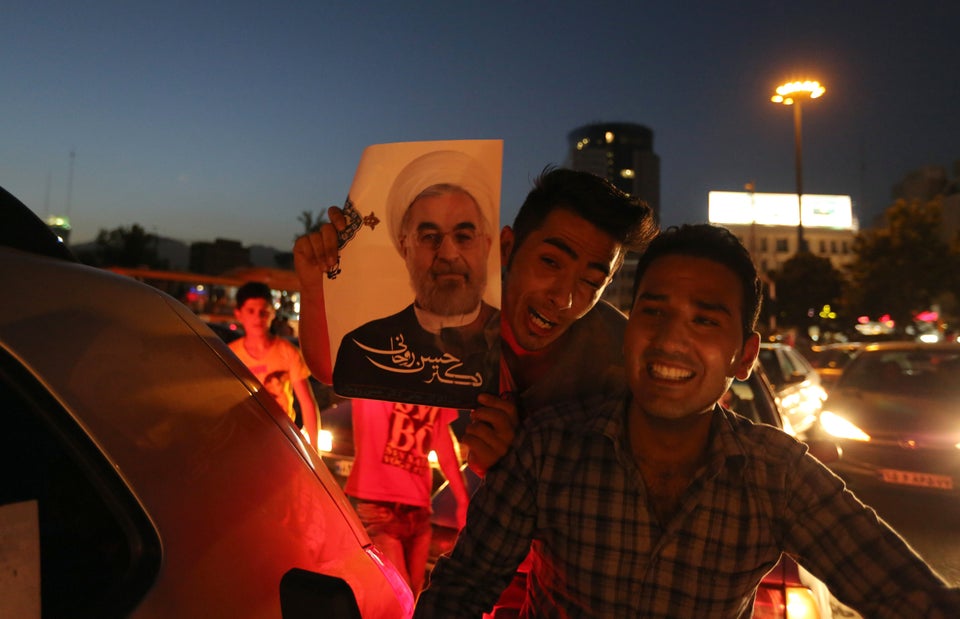
Iran's culture minister, Ali Jannati, has some good news: The country will be reviewing book censorship policies and maybe -- just maybe -- relaxing its book ban in the near future.
The encouraging announcement arrives amid what appear to be progressive reforms in Iran under new president Hassan Rouhani, evidenced with particular potency by Rouhani's telephone conversation with the U.S. President Barack Obama, the first U.S.-Iran phone chat since the 1979 revolution.
Under Iran's hard-line former president Mahmoud Ahmadinejad, countless classics were banned, much to the dismay of Iranian publishers who were required to submit prospective books to the culture ministry for review. As reported by The Guardian, "words such as 'kiss', 'beloved', 'wine', 'drunk', 'pork', 'dance', 'rape', 'dog' and 'meditation'" were prohibited and would lead to censorship, by either text manipulations or total censorship.
Jannati, however, has recognized the absurdity of such restrictions. Quoted by Iranian reformist newspaper Arman, the culture minister said:
I sadly learned that some books were denied permission to be published only on the grounds of personal opinions. I think if the Qu'ran was not a divine revelation, when it was handed to the book supervisory board, they would say some words did not comply with public chastity and would deny it permission for publication.
Even if nuclear talks stall, Iran may regain respect in the literary world if Jannati's promise to review censorship policies becomes reality.
Among the more than 200 books reportedly banned in recent years, here are 11 popular works Iranians may be able to buy and read if the government relaxes censorship:
1. Symposium by Plato
Delivered in the form of a hypothetical, round-table discussion among thinkers, this ancient classic is a philosophical exploration and celebration of love. Every man in attendance of the symposium, including philosopher Socrates and playwright Aristophanes, delivers a speech praising Eros. Apart from rhetorical reference to sex, though, there's nothing particularly sexy about the Symposium.
2. Ulysses by James Joyce
This Irish tome chronicles a single day in the life of fictional character Leopold Bloom, loosely paralleled to Homer's Odyssey. The book employs stream-of-consciousness narrative, parody, pun and other intricate literary devices, all while depicting bathroom scenes and referencing masturbation. At 265,000 words, Ulysses proves a beast of a book to inspect for banned words.
3. The Blind Owl by Sadegh Hedayat
One of the most beloved works by Iranian author Hedayat, this book tells the story of an unnamed protagonist confronting his own relationship with death and the murderous nightmares that plague him. The story deals with dark subject matter, to be sure, but also contains rich meditations on the state of the human soul, including reflections on metaphysics, poverty, and love.
4. As I Lay Dying by William Faulkner
This classic American novel takes a snapshot of a family mourning the death of its matriarch. Weaving social, political and economic themes, Faulkner highlights the tangled network of a large family by offering the novel's events from 15 different perspectives. No sex, drugs, or rock 'n' roll here.
5. The Last Temptation of Christ by Nikos Kazantzakis
It's easy to identify the aspects of this book that lead to its censorship -- Jesus is the central character, his life and death the subject of the narrative. The book explores the concepts of sin, temptation, God and destiny, upholding Jesus as a divine figure as much as dissecting his life's events. That said, it's literature, not dogma.
6. Girl With a Pearl Earring by Tracy Chevalier
Inspired by the Johannes Vermeer painting of the same name, this work tells a fictional story of the painter's relationship with his subject, a servant girl with whom he develops both an artistic and a romantic relationship. Suggestive and sensual in its themes, Chevalier's work is no trashy romance novel and offers plenty of historical and rhetorical richness in addition to romantic developments.
7. The Colonel by Mahmoud Dowlatabadi
Written by a renowned Iranian author, The Colonel centers on a military man reeling from the death of his daughter in during the 1979 Iranian Revolution. By describing the horrors of war through the protagonist's eyes, the author conveys his own critique of a tortured country, which likely would have gotten him in serious trouble had the book been published in Iran.
8. The Zahir by Paulo Coelho
This book tells the story of a novelist in search of his missing wife and reflecting on the complex and often-troubled nature of marriage. Interestingly, though Coelho wrote this book in his native Portuguese, it was first published in Iran, translated into Persian. Nonetheless, the work was banned within months of its release.
9. Memories of My Melancholy Whores by Gabriel García Márquez
Any García Márquez work offers risqué elements. This one falls on the more scandalous side, telling the story of a 90-year-old man in search of sexual relations with a young prostitute. But again, as a García Márquez work, the book contains rich imagery, compelling characters and poignant themes.
10. Journey to the End of the Night by Louis-Ferdinand Céline
Full of violence, anger and nihilism, this book is rough around the edges, but offers a potent critique of society as depressing as it is thought-provoking. As a veritable manifesto against social institutions, the novel was probably banned on the basis of its revolutionary themes -- but how many classic works out there don't include subversive elements?
11. The Da Vinci Code by Dan Brown
Except to devout conspiracy theorists, this book is little more than an elaborate and highly entertaining mystery novel. Yes, it discusses murder, religion, illicit sexuality, paganism and centuries-long conspiracy, all of which might alarm the religious and political powers that be. But let's call this book what it is: Just plain fun.

